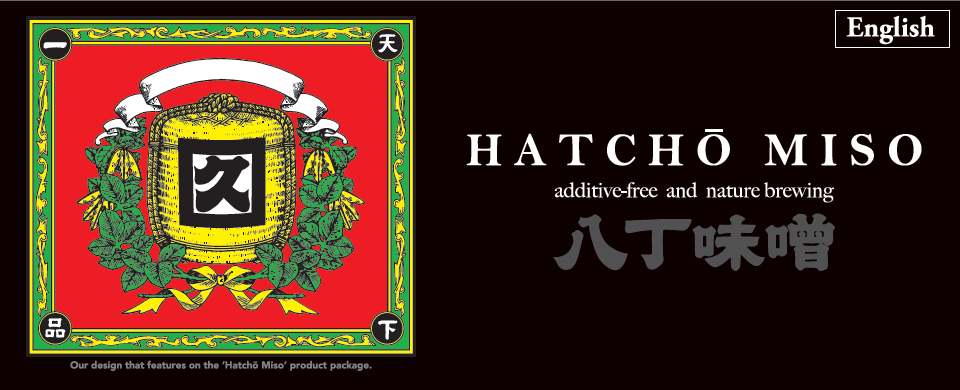
Miso is a fermented food made from two basic ingredients: soybeans and salt, and is regarded as one of the many condiments essential to Japanese cooking.
Numerous kinds of miso exist in Japan depending on the region, however, we have continued to produce Hatchō Miso since 1645 without altering our unique production method, which employs the basic ingredients of soybeans and salt, thus making it stand out from other types of miso.
Known for its distinctive acidic, astringent and bitter flavor, the name 'Hatchō Miso' is originally derived from the geographical name of 'Hatchō' where the miso used to be produced, and as a result, came to be known by this name.
Produced using a long-established process of manufacture, Hatchō Miso comprises just approximately 0.2% of the total volume of miso produced in Japan.
When one enters the Kakukyu storehouse one will find rows of traditional large wooden casks, which are used to prepare miso. One by one, craftsmen place by hand large quantities of stone on top of the wooden casks so that they act as weights. In the past these stones have never collapsed, even in the event of large earthquakes. Under the weight and pressure of three tons of river rocks, 6 tons of Hatchō miso is left to slowly mature throughout the hot, humid summers and relatively mild winters of Hatchōchō.
Firstly, our carefully-selected soybeans are immersed in water and are left to soak up moisture in moderate amounts depending on the temperature, humidity and actual state of the basic ingredients. This process is one of the crucial elements in producing miso and significantly influences the quality of the final product. Following this, the soybeans are steamed with hot vapor, then koji mold [Aspergillusoryzae] (a type of microorganism used for fermenting cereal grain) is added to the surface of the beans, and the soybeans are left to ferment. Next, dietary salt and water are added to the fermented soybeans and thoroughly blended together, after which the mixture is laid into a wooden cask large enough to hold 6 tons of miso. It is within the climate and natural features of Hatchōchō district (formerly known as Hatchōmura) in Okazaki City that the miso is slowly matured over a period spanning more than two years.
Protein within the miso break down whilst inside the wooden casks, enabling it to transform into miso. Then, as the miso continues to ferment, amino acid starts to crystallize and white grains known as 'millet grains' (so named due to their resemblance to millets) start beginning to appear. When the millet grains start to surface, it is a sign that the miso has matured, and this can be likened to the crystallization of amino acids in cheese that has been matured over long periods. Throughout this lengthy period of maturing, the salt harmonizes with the miso, giving it a mellow saltiness.
During the production of Hatchō Miso, the microbial communities already living inside the factories begin to operate and exert their influence on the miso's flavor.We pay meticulous care not to destroy this microbial environment and continue to produce Hatchō Miso, not only in the same place where it has been made since the time of the company's founding, but by sticking to our traditional manufacturing process.
Soybeans are filtered and cleaned
Soybeans are immersed in water and left to soak up moisture in moderate amounts (the soaking process is fine-tuned depending on temperature, humidity, etc.)
Soybeans are steamed
The steamed soybeans are molded into round balls the size of a fist (which are called miso balls).The miso balls are coated with koji mold.The miso balls are cultivated (the cultivated miso balls are called "soybean koji")
Salt and water are mixed with the soybean koji and laid into wooden casks 1.8m high (total weight being produced 6 tons)
Under the pressure of 3 tons of stones the miso is left to mature for over 24 months to become Hatchō Miso
Only quality approved miso is packaged (as raw miso)
The miso is shipped